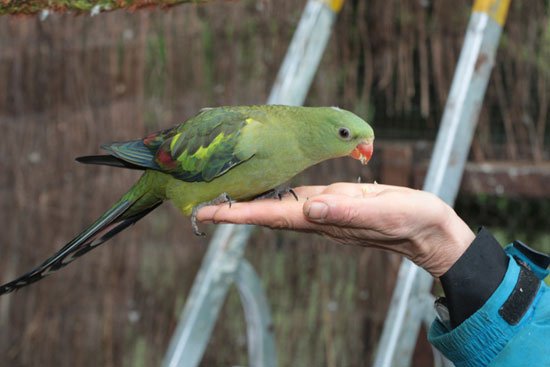Table of Contents
Teaching your bird to step up on command is one of the most fundamental and useful behaviors to train. This command helps in handling your bird safely and building a stronger bond between you and your feathered friend. In this article, we provide 10 effective techniques on how to teach a bird to step up quickly and successfully.

Choose the Right Time and Place
Ensure that your bird is calm and relaxed before you start training. Choose a quiet environment with minimal distractions to help your bird focus. For more tips on creating an ideal training environment, visit The Spruce Pets Bird Training Basics.
Use a Perch
Begin by offering your bird a sturdy perch to step onto. Place the perch slightly above your bird’s feet and gently press it against their belly, just above their legs. This encourages them to lift one foot and step onto the perch. For more on using perches, see PetMD Bird Training Tips.
Introduce a Command
Choose a simple command like “step up” or “up” and use it consistently. Say the command in a calm, clear voice as you present the perch. For more on using commands, visit Petfinder Bird Training.
Use Positive Reinforcement
Reward your bird immediately when they step onto the perch. Use treats, praise, or gentle petting to reinforce the behavior. Positive reinforcement helps your bird associate the command with a positive outcome. For more on positive reinforcement, see Humane Society Positive Training.
Be Patient and Consistent
Training takes time, so be patient and consistent with your efforts. Practice the step-up command in short, regular sessions to avoid overwhelming your bird. For more on consistent training, visit Clicker Training for Birds.
Use a Target Stick
A target stick can be a useful tool for training. Teach your bird to touch the stick with their beak and gradually guide them to step onto the perch. This method can help birds who are hesitant or shy. For more on target stick training, visit The Spruce Pets Target Training.
Practice Hand Perching
Once your bird is comfortable stepping onto a perch, transition to using your hand as the perch. Follow the same steps, gently pressing your hand against their belly and using the command. For more on hand perching, see PetCoach Bird Training.
Stay Calm and Confident
Birds can sense your emotions, so stay calm and confident during training. Avoid sudden movements or loud noises that might scare your bird. For more on creating a calm training environment, visit Cesar’s Way Bird Training.
Repeat and Reinforce
Repetition is key to learning. Repeat the step-up command and reinforce the behavior with rewards every time your bird steps up. Over time, your bird will become more reliable with the command. For more on reinforcing behavior, see Vetstreet Bird Tricks.
Address Fear or Aggression
If your bird shows signs of fear or aggression, take a step back and assess the situation. Ensure you’re not pushing your bird too quickly and adjust your approach as needed. For more on addressing fear and aggression, visit BirdTricks Understanding Aggression.
Conclusion
Learning how to teach a bird to step up is essential for building trust and ensuring safe handling. By following these 10 effective techniques, you can teach your bird to step up quickly and successfully. Remember to be patient, consistent, and positive throughout the training process. For more tips on bird care and training, check out our Bird Training Guide.
FAQs on How to Teach a Bird to Step Up
What if my bird refuses to step up?
If your bird refuses to step up, be patient and try again later. Ensure they are calm and not stressed, and use gentle encouragement with treats.
How often should I practice the step-up command with my bird?
Practice in short sessions of 5-10 minutes several times a day to avoid overwhelming your bird and to reinforce the behavior consistently.
Can older birds learn to step up?
Yes, older birds can learn to step up. The training principles are the same, though it may take more time and patience compared to younger birds.
Should I use a clicker for training my bird?
Using a clicker can be beneficial as it provides a clear and consistent marker for desired behavior. Pair the clicker with positive reinforcement for best results.
What if my bird shows signs of aggression during training?
If your bird shows aggression, stop the training session and give them some space. Reassess your approach and ensure you’re not moving too quickly for your bird’s comfort.
How can I transition from using a perch to using my hand?
Once your bird is comfortable with the perch, gradually introduce your hand as the perch. Follow the same training steps, gently encouraging them to step onto your hand.











